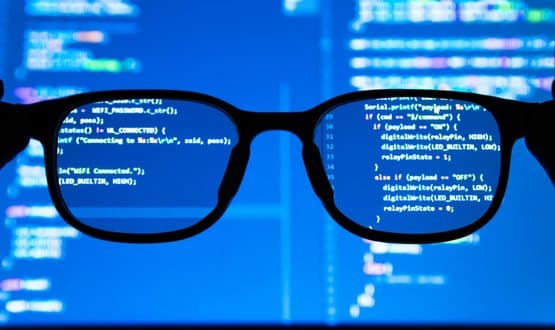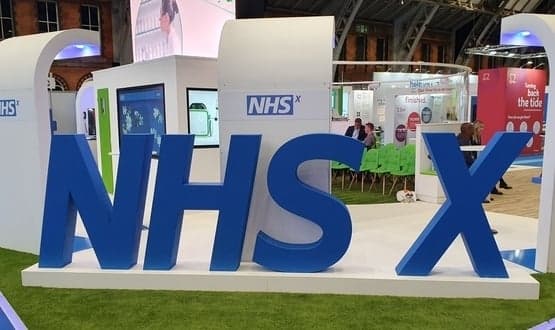The purpose of LHCREs has always been clear – if you were paying attention
- 26 February 2019

For Ewan Davis, the recent reported annoyance over the purpose of local health and care record exemplars (LHCREs) is misplaced – he argues that it was always the intention for LHCREs to enable a national data resource. He also believes that such a resource is necessary and valuable. But he suggests it will only be possible if changes are made and the lessons of the past heeded.
As Jon Hoeksma says in the title of his recent piece, a tug of war over local health and care record exemplars (LHCREs) is underway.
The controversy seems to have been ignited by the insistence of Matthew Swindells, NHS England’s deputy chief executive, that the LHCREs should be persisting normalised data at scale to enable a common library of analysis tools to be run across all of them.
This seems to have come as a surprise to some of the LHCREs. But all I can say is that if they are surprised then they really haven’t been paying attention.
The history of the LHCREs can be traced back to a publication emerging from work by Will Smart, chief information officer for health and social care in England. Early versions of the document – which, as reported by Digital Health in January 2017, referred to the creation of a ‘data lake’ – have disappeared from the web. But a later sanitised version of “Enabling evidence based continuous improvement: the target architecture” has been preserved by MedConfidential.
This document is clear that the primary purpose of its proposals is direct patient care but it is equally clear that secondary uses are also important objectives.
Read between the lines – and consider this document arose from a discussion about creating a national patient data collection service that would make pseudonymised and identifiable patient data available for research – and it’s difficult to avoid the conclusion that secondary uses of data were high on the agenda. Note too that said discussion was between the NHS; IT suppliers including IBM, Microsoft and Google DeepMind; and several universities.
The primary importance of secondary uses
I’d be the first to acknowledge the importance of using NHS data for a range of secondary uses. Indeed, I’d argue I was one of the first people who tried to do so. In 1987 my company AAH Meditel built a database of five million “anonymised” GP records. We were fighting the technology all the way and this scheme and a similar one by VAMP Health ultimately failed. But we computerised general practice, learnt a lot, and laid the foundations for GP research databases like THIN, CPRD and QResearch that continue successfully to this day.
When the then-national director for patients and information Tim Kelsey launched care.data, he made the hyperbolic statement that without doing something like it the NHS would soon cease to exist. Well Tim Kelsey didn’t do it, time has passed, and the NHS is still here.
That said, he had a point. If we are to address the challenges that healthcare faces, we do have to exploit the opportunities that are offered by digital technology. That includes machine learning and deep learning analytic tools that are far more powerful than those available to me and my colleagues 30 plus years ago.
Three key issues to address
For this to happen we will need to address three key issues.
Firstly, making the data available in a computable form. Today, data is fragmented between paper records and multiple systems each holding information in proprietary, incompatible formats. Much of the most interesting data is held in the myriad of ‘feral’ or ‘shadow’ IT systems developed below the corporate radar, out of frustration with corporate systems’ inability to meet the needs of individual clinicians.
We can address this by moving to an open platform where data is stored in a single open computable format. A blueprint for this is laid out in the Apperta Foundation’s “Defining an open platform” document. Two of the LHCREs (Manchester, and Yorkshire and Humber) are following this blueprint. If others follow, we would have the ability to do the national level analysis that Matthew Swindells seeks.
Clearly it’s a long journey to move from current systems to an open platform but the LHCREs are a great place to start. And the place for them in turn to start is with a personal health record. Again, Apperta lays out a plan for this in “A blueprint for a co-produced personal health record” which builds on the pioneering work done by the Ripple Foundation with the Leeds PHR.
The garbage in, garbage out issue
Secondly, we must understand and improve the quality of data stored. Much of the information currently on corporate systems has no operational value to those recording it and the task is thus completed with little care, meaning incomplete and inaccurate data.
Meanwhile data that is of adequate quality to be used for the purpose for which it was recorded may not be fit for any secondary purposes. The old adage of “garbage in, garbage out” holds true for modern data analytics where the black-box algorithms now make it much harder to spot the garbage out.
To address this we need to make data quality important to the people doing the recording. This means the focus has to be on direct care first and foremost. Systems need to be created that support the process of care and make the work of frontline staff easier, quicker and more rewarding. We can’t afford to continue with systems that slow down the job and create stress for frontline staff.
Nor can we afford the solution adopted in the USA to address the poor usability of the obsolete megasuites that dominate the hospital electronic health record (EHR) market – namely the creation of an army of medical scribes to sit between the clinician and the computer. Instead we need to enable those innovative companies with radical approaches to user interface and user experience design (UI/UX).
Again an open platform can do this by dealing with the complexity of health data and the compliance issues associated with it. That way, the app developers can concentrate on solving the complex UI/UX challenge of making IT useable in complex clinical environments.
The need to regain public trust
Finally, we have to address the confidentiality and information governance issues raised, particularly by secondary uses. To do this we have to be honest and open with the public and let them decide how their data is used. We need to acknowledge the risks and concerns that exist and avoid repeating past mistakes like care.data and the debacle at Royal Free NHS Foundation Trust with DeepMind.
We need to acknowledge that rich clinical data cannot be robustly anonymised. De-identification is important to avoid unintended disclosure, but re-identification is easy by those minded to do it. The lies told by care.data about the effectiveness of anonymisation, and the deliberate difficulties put in the way of those who wished to opt-out, have massively and unnecessarily undermined public confidence. We need to re-build it.
Professor Joe McDonald neatly encapsulates the approach we need to take in his phrase: “Data is there for the asking not the taking.” His wisdom is based on work with the Great North Care Record, which has gone to great lengths to engage with patients and make it easy for them to give or withhold their informed consent.
For evidence that if approached honestly and openly the public will agree for their data to be used for secondary purposes, we need look no further than UK Biobank. The team there have successfully recruited 500,000 volunteers to donate not just their data but also their time and bodily fluids, all on no more than the promise of the greater good for future generations. By restricting “taking the piss” to its literal meaning, UK Biobank hit their recruitment target more quickly than expected.
So returning to the LHCREs. Their first objective must be to support the delivery of new models of joined-up care and allow the development of new digital tools that make the life of frontline staff and patients better. But – and this is of no less importance – we also need to produce the consistent, computable data that can support population health, making use of the latest developments in machine learning and big data analytics within and across the LHCREs.
These objectives won’t be achieved by trying to join up a ragbag of legacy systems or the surreptitious use of patients’ data. We need a new approach based on open platforms and open governance.
Ewan Davis is a digital health strategist, chief executive of inidus and a non-executive director at Digital Health.





13 Comments
Really good article , Ewan. Hopefully the beginning of an open and transparent, public debate about patients and their data. Trust is the key that unlocks the power of healthcare data. The birth of NHSX is, I believe, an opportunity to regain public trust and a chance to change the culture of NHS IT. If not now? When? If not us? Who?
Hi Ewan – agree with your article. Would add that regaining trust might well be facilitated by improving access to care records for patients. We know that patients generally want their information made available at the point of care & are often altruistic about secondary uses. This should improve public confidence and improve citizen patient autonomy. So I see this as a powerful enabler for regaining trust and giving the citizen patient more control over sharing decisions.
My vision for the future is laid out in apperta.org/coPHR
Let the patient decide where their record is stored, who it’s shared with and what it’s used for.
The record needs to be co-produced with the patient and those they trust their care to in a way that respects the rights of all parties.
I applaud your vision, provided it includes the option of not having an integrated LHCR. Unfortunately your vision could not be further from the intentions of the current Government as a whole, the DHSC in particular and the NHS. I have wasted five years of work trying, through all available channels, to obtain these rights from the NHS and I have been resolutely ignored or overruled by everyone, without exception. This has destroyed my quality of life and damaged my health. So much for the NHS being proactive in supporting the health, well being and empowerment of NHS patients. I have finally realised that I can only protect myself from the NHS by de-registering from the NHS. Their determined agenda has no relation to your vision and no relation to the vision they claim to be pursuing.
let’s get one thing straight digital health .net, the responsibility for ensuring all have access to all their health data lies @ the national level and more WORK needs to be done @ the national level ! IT is no longer an academic exercise, IT is about WORK
Thanks for the article Ewan. All roads lead to open platforms, and I wouldn’t disagree, except it’s just as possible to build unusable clinical IT systems that need scribes, and are not that clinically helpful or relevant, on an open platform as it is on any other platform.
I think many of the systems started from the wrong place, as they are about collecting data primarily and the functionality and any attempt to be actually useful is something of an afterthought. This possibly stems from old fashioned analysis and design mentalities, entity diagrams and all that. From there they are a right mess, as they then confuse that data set model ideal for secondary use with a front end that is trying to be useful (OLTP vs OLAP in old speak). We end up with clinicians working for the system rather than the other way around, like Amazon workers who now claim to be working for the robots.
New systems therefore required, with new design methodologies, and technologies fit for the 21st century. The whys and wherefores of Citrix aside, the fact that most of the EPRs available require it to run a successful implementation of their fat clients is lamentable.
We need to be very careful not to get carried away with user design. Users kind of know what they want but they don’t usually know what they need. It’s a great and rare analyst skill to bring these together. I’d argue that right there lies one of the fundamental issues, understanding and recognition of that.
Back to the open platform, as you know, we at Southampton (@UHSGDE @MyMedRec @TheOpenPHR) run probably the largest secondary care open platform personal health record in the country, and always try to buy or build using open platform principles outlined so well in the Apperta document. I maintain however that this is hard work, highly technical work at times, and therefore it is easier to run to a supplier and their out of the box proprietary data lock in. I therefore predict more of the latter unless CIOs can get their act together. Signs of this happening = low, at the moment, frankly. Even the well established VNA model for imaging is being broken by self interest.
Good luck. This is a long reply to your article that tries to deal with many things, and I haven’t even addressed most of them.
Ade
Lots of wise words Ade – To pick up a few points:
Yes, of course you can build awful systems on an open platform. At the current stage of development open platforms don’t have much direct impact on the UI/UX layer. However, building a traditional application the developer has so much “plumbing” to deal with, building the bit of the iceberg that not visible above the waterline whereas a developer build on the platform already has the “plumbing” in place and can concentrate most of their resources on the challenging problem of building a UI/UX that doesn’t need a scribe.
As for user centred design it’s about involving users throughout the design and development process and not a some seem to believe about users designing systems – That’s the job of engineers, informaticians and designers. Ordinary users are not good at articulating what they want and don’t know what’s possible and what’s nott. However, they can recognise what they want and don’t want when they see it. It’s job of the professionals to draw out the requirement and instantiate these in wire-frames and prototypes and test these with users.
I strongly agree with you point about systems starting from the wrong place with a focus on data collection and the EHR. The focus need to be on building systems that support the process of care – EHRs are a by-product of this not the objective. If I look at the success of GP IT in the 1980’s the work we did was not about creating a primary care EHR but supporting the business processes of GP practices out of which a EHR eventually emerged.
To achieve the transformation benefit we need from digital technology we need to do things radically differently. As you say it hard.
Great article Ewan. Obviously at Stalis we come into daily contact with NHS data when we’re migrating and archiving legacy proprietary data that is locked away in the ‘silos’ you described in your article. We can absolutely vouch that the current state of data in the NHS is not fit for purpose when it comes to being used for predictive analytics. God only knows what A.I. would recommend based on the majority of data we come across! I think your points about open platforms and asking for consent are bang on the mark and its obvious to me that both will have to happen for the NHS to be able to adapt to ever changing and increasingly frequent demands.
So secondary purposes is the primary purpose….
My view also.
On the tech side we can design systems to match clinical/people workflow but having to populate a big database alters how we design.
So instead of an ambulance sending enough information for an ED clinician to continue care, it becomes a complex data transfer event. We need to focus on the 90%, not let the 10% do the driving.
you are correct Andy, i would add, some trusts are far far worse than others, with regard to DATA, the nhs has got itself into a dreadful mess / hole, talking will not get it out of that hole only WORK, Clive
We won’t succeed if we don’t make direct care the focus. We should not ask frontline staff to record data that does not either directly support the delivery of care or their personal reflection on it.
When you are forced to record information that has no value to you then you have no interest in the quality of that data and it simple becomes a source of frustration.
However, the data that can be captured in this way has great value for a range of secondary purposes and we must ensure it is collected in a way that facilitates these uses.
The time for rebuilding public trust is long gone. Some patients don’t care what happens to their personal data, but others do. I have been lied to so comprehensively by the NHS, for so long, that nothing on this earth will induce me to trust my personal data to their systems. I will only trust my doctors if I know that my records are literally outside the NHS systems, which are controlled by people I will never trust in anything. I need to know that nobody can touch my records except those directly involved in my care. The NHS has a simple choice: either they offer me healthcare on terms I can accept, or they exclude me from healthcare. There is no other option.
I am getting really tired of the endless meaningless talk about open governance in the NHS. That is a contradiction in terms. This institution is constitutionally incapable of anything but lying, coercion and duplicity and it will never tell the truth while it has the possibility of lying. You don’t build trust by constructing your systems out of layer upon layer of duplicity, each created with the intention of concealing the lie beneath. Frankly, the NHS is a total nightmare and should carry a Government Health Warning – but that would mean telling the truth.
Comments are closed.